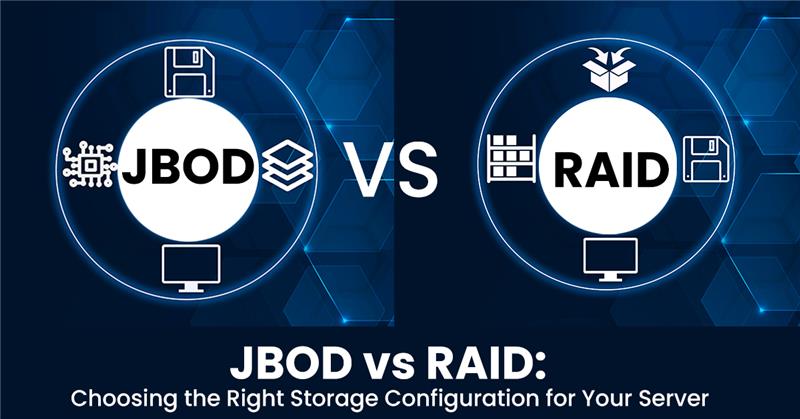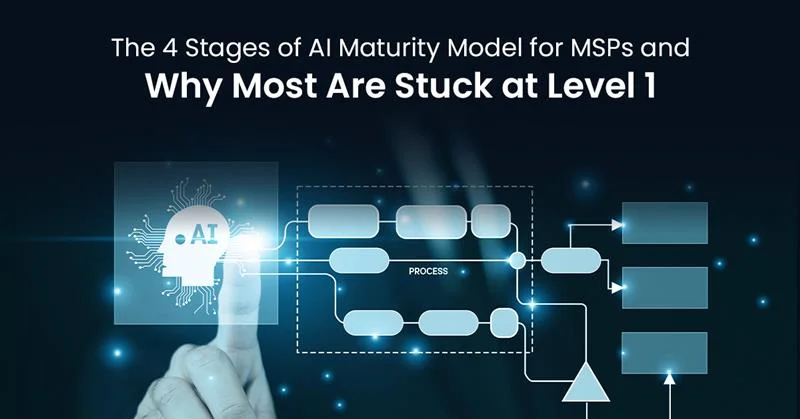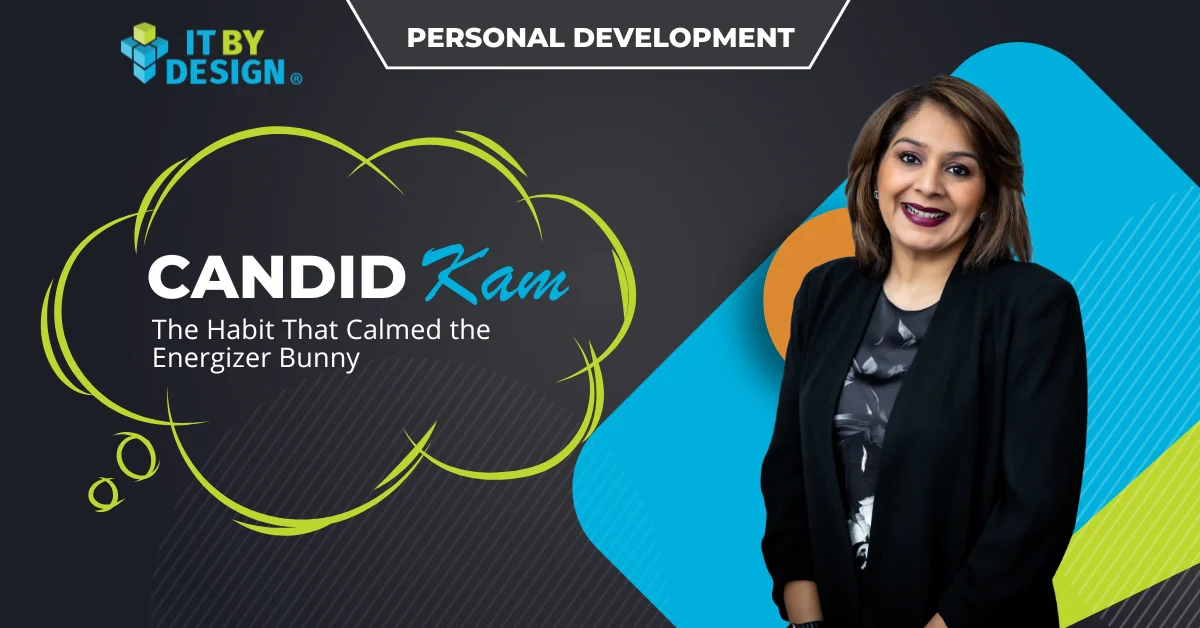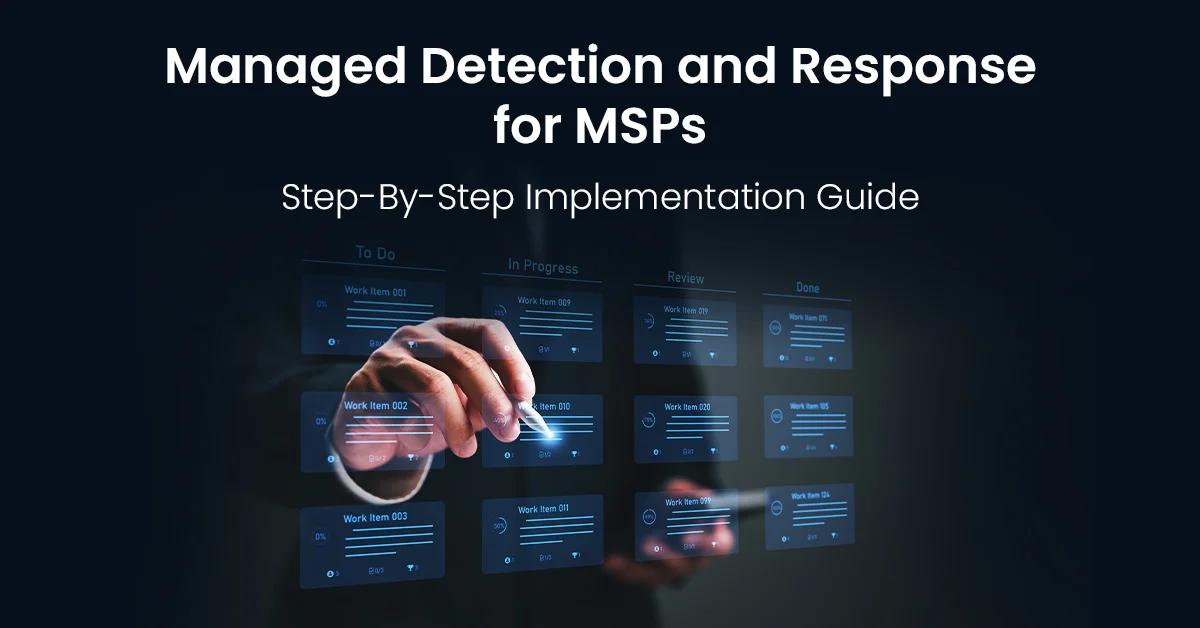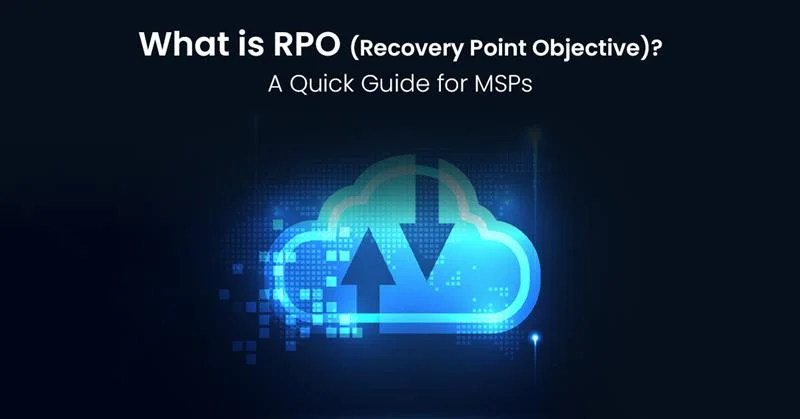Server downtime costs businesses an average of $5,600 per minute according to Gartner research. When you’re making the JBOD vs. RAID decision for your server infrastructure, you’re not just choosing a storage setup—you’re making a critical business decision that impacts performance, data protection, and operational costs.
Understanding the differences between JBOD, RAID 0, and RAID 5 can mean the difference between seamless operations and costly downtime. This comprehensive guide will help you navigate these storage options and choose the configuration that best fits your business needs.
What is JBOD storage?
JBOD stands for “Just a Bunch of Disks” and represents the simplest form of storage configuration available. In a JBOD setup, each drive operates independently without any form of redundancy, performance enhancement, or logical relationship between drives. Think of it as having multiple standalone hard drives housed in a single server chassis.
Key characteristics of JBOD
In JBOD configurations, each drive maintains its own file system and operates completely independently. There’s no data striping, mirroring, or parity calculations occurring between drives. This simplicity is both JBOD’s greatest strength and its primary weakness.
Key JBOD features:
- Independent operation – Each drive functions as a separate unit
- No data redundancy – Drive failures affect only that specific drive
- Maximum capacity – 100% storage utilization with no overhead
- Simple management – Easy to monitor and maintain individual drives
When a drive fails in a JBOD system, only that specific drive’s data is lost—other drives continue operating normally. This failure isolation can be advantageous in certain scenarios, but it also means you have no built-in protection against data loss.
JBOD utilizes 100% of your total drive capacity since there’s no overhead for redundancy or parity information. If you install four 1TB drives, you get the full 4TB of usable storage space.
When JBOD makes sense
JBOD configurations work well in several scenarios:
Ideal use cases:
- Development environments – Where data can be easily recreated
- Media storage and archival – When capacity matters more than speed
- Budget-conscious deployments – Cost savings outweigh risks
- Non-critical applications – Where downtime is acceptable
Small businesses with tight budgets frequently choose JBOD for non-critical applications where the cost savings outweigh the risks. Additionally, environments where individual drive management is acceptable and storage capacity requirements exceed performance needs find JBOD suitable.
Understanding RAID technology
RAID (Redundant Array of Independent Disks) technology transforms multiple physical drives into a single logical unit to achieve improved performance, redundancy, or both. Different RAID levels serve specific business needs, from high-performance computing to mission-critical data protection.
RAID 0: Maximum performance, maximum risk
RAID 0, also known as striping, distributes data across multiple drives simultaneously. When you write a file, RAID 0 splits it into blocks and writes different blocks to different drives at the same time. This parallel processing dramatically improves both read and write performance.
RAID 0 benefits:
- Exceptional performance – Up to 4x throughput with 4 drives
- Full capacity utilization – 100% of total drive space
- Ideal for high-speed applications – Video editing, databases, HPC
RAID 0 drawbacks:
- No redundancy – Any drive failure destroys entire array
- High risk – Complete data loss if any single drive fails
- Requires robust backups – External protection essential
The performance benefits of RAID 0 are substantial. With four drives in a RAID 0 array, you can theoretically achieve four times the throughput of a single drive.
However, RAID 0 provides no redundancy whatsoever. If any single drive in the array fails, the entire array becomes unusable and all data is lost. This makes RAID 0 unsuitable for storing critical business data unless you have robust backup systems in place.
RAID 0 utilizes 100% of your storage capacity since no space is reserved for redundancy. The trade-off is accepting significantly higher risk of complete data loss in exchange for maximum performance.
RAID 1: Maximum protection, reduced capacity
RAID 1, or mirroring, creates exact copies of your data on multiple drives. Every piece of information written to one drive is simultaneously written to its mirror drive. This redundancy provides excellent fault tolerance—if one drive fails, the system continues operating normally using the mirror drive.
RAID 1 advantages:
- Excellent fault tolerance – Survives single drive failures
- Improved read performance – Can read from multiple drives
- Real-time redundancy – Instant data protection
- Quick recovery – Minimal downtime during drive replacement
RAID 1 limitations:
- 50% capacity utilization – Half of storage space used for mirroring
- Slower write performance – Must write to multiple drives
- Higher cost per GB – More expensive than single drive storage
Read performance in RAID 1 can actually improve since the system can read from multiple drives simultaneously. However, write performance may decrease slightly since every write operation must be performed on multiple drives.
The main drawback of RAID 1 is capacity utilization. With two drives, you only get 50% of the total storage capacity. Four 1TB drives in RAID 1 provide only 2TB of usable space, with the remaining 2TB used for mirroring.
RAID 1 excels in scenarios where data protection is paramount and you can afford the capacity reduction. Financial systems, healthcare databases, and other mission-critical applications often use RAID 1 for its reliability.
RAID 5: Balanced performance and protection
RAID 5 strikes a balance between performance and protection by using distributed parity. Data is striped across multiple drives like RAID 0, but parity information is also distributed across all drives. This parity information allows the system to reconstruct data if any single drive fails.
RAID 5 key features:
- Distributed parity – Parity information spread across all drives
- Single drive fault tolerance – Can survive any one drive failure
- Good performance – Near RAID 0 read speeds with protection
- Efficient capacity usage – 67-80% storage utilization
Performance characteristics:
- Read performance – Approaches RAID 0 levels
- Write performance – Reduced due to parity calculations
- Rebuild capability – Automatic data reconstruction after drive replacement
The performance characteristics of RAID 5 are generally good for most business applications. Read performance approaches that of RAID 0 since data can be read from multiple drives simultaneously. Write performance is somewhat reduced due to parity calculations, but it’s still superior to RAID 1 for most workloads.
RAID 5 can survive the failure of any single drive in the array. When a drive fails, the system continues operating in a degraded state while you replace the failed drive. Once replaced, the array automatically rebuilds the missing data using the parity information.
Storage capacity in RAID 5 depends on the number of drives. With four drives, you get approximately 75% capacity utilization. The equivalent of one drive’s capacity is used for parity information, regardless of how many drives are in the array.
Quick Comparison of JBOD Vs. RAID 0 Vs. RAID 5
|
Feature |
JBOD | RAID 0 | RAID 5 |
|
Performance |
Individual drive speed | Excellent |
Good |
|
Protection |
None | None |
Single drive failure |
|
Capacity |
100% | 100% |
67-80% |
|
Complexity |
Low | Medium |
High |
| Cost | Lowest | Medium |
Highest |
Performance considerations
Performance requirements vary significantly between applications and workloads. Understanding how each configuration handles different types of data access patterns is crucial for making the right choice.
JBOD performance profile:
- Limited to individual drive capabilities
- Good for sequential workloads
- May become bottleneck for high-throughput applications
- Predictable performance per drive
RAID 0 performance profile:
- Excellent sequential and random access
- Aggregated bandwidth of all drives
- Ideal for database operations
- Low latency for large file transfers
RAID 5 performance profile:
- Good balance for most business applications
- Efficient read operations
- Some write performance degradation
- Suitable for mixed workloads
Risk assessment and data protection
Risk tolerance varies significantly between organizations and applications. Understanding the implications of each storage configuration for your specific risk profile is essential.
|
Risk Factor |
JBOD | RAID 0 | RAID 5 |
|
Risk Level |
High | Highest | Moderate |
|
Failure Impact |
Localized to individual drives | Complete array failure |
Can survive single drive failure |
|
Data Loss |
Immediate for failed drive | All data lost |
No data loss during single failure |
|
Backup Dependency |
External backup required | Robust backup mandatory |
Backup recommended |
| Business Suitability | Non-critical applications | High-performance, non-critical | Most commercial applications |
| Recovery | Replace individual drives | Rebuild entire array |
Automatic rebuild process |
Cost analysis and total ownership
Initial hardware costs represent only part of the total cost equation. Management complexity, power consumption, and potential downtime costs must all be considered.
JBOD has the lowest initial cost since it requires no specialized hardware beyond basic drive controllers. Management is straightforward and power consumption is minimal. However, the lack of redundancy may result in higher long-term costs if data loss occurs.
RAID 0 requires RAID controller hardware, which adds to initial costs. Power consumption increases with the number of drives and management complexity is moderate. The primary cost risk is complete data loss if any drive fails.
RAID 5 has the highest initial investment due to RAID controller requirements and reduced storage efficiency. Power consumption is highest and management complexity is significant. However, the improved reliability may reduce long-term costs through decreased downtime and data loss risks.
Conclusion: Choose the right storage strategy
Your storage decision depends on three key factors: budget, data protection needs, and performance requirements.
- Tight budget? JBOD may work
- Need maximum performance? Consider RAID 0
- Want balanced performance and protection? RAID 5 is ideal for most businesses
Storage needs expand over time. Planning for scalability now prevents costly reconfigurations later.
Don’t risk your business data with guesswork. IT By Design offers NOC certified engineers who provide:
- Comprehensive workload and risk assessment
- 24/7 storage infrastructure monitoring
- Custom JBOD vs. RAID analysis
- Professional installation and optimization
- Complete support from setup to disaster recovery
Ready to protect your business?
Contact IT By Design for a free storage assessment. We’ll recommend the optimal configuration that balances performance, protection, and cost.

